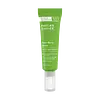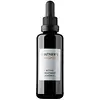What's inside
What's inside
 Key Ingredients
Key Ingredients

 Benefits
Benefits

 Concerns
Concerns

No concerns
 Ingredients Side-by-side
Ingredients Side-by-side

Water
Skin ConditioningGlycerin
HumectantCoco-Caprylate
EmollientButylene Glycol
HumectantPropanediol
SolventGlyceryl Stearate
EmollientEmblica Officinalis Fruit Extract
Skin ConditioningEuterpe Oleracea Fruit Extract
Vaccinium Macrocarpon Fruit Extract
AstringentVaccinium Myrtillus Fruit Extract
Skin ConditioningRubus Idaeus Fruit Extract
AstringentSambucus Nigra Fruit Extract
AstringentMalpighia Emarginata Fruit Extract
Skin ConditioningHippophae Rhamnoides Fruit Extract
Skin ConditioningSchisandra Chinensis Fruit Extract
Skin ConditioningRubus Chamaemorus Fruit Extract
AntioxidantLycium Barbarum Fruit Extract
AstringentPlinia Cauliflora Fruit Extract
Skin ConditioningFragaria Vesca Fruit Extract
AstringentMelia Azadirachta Flower Extract
Skin ConditioningMelia Azadirachta Leaf Extract
Skin ConditioningMyrciaria Dubia Fruit Extract
Skin ConditioningVitis Vinifera Seed Extract
AntimicrobialGlycyrrhiza Glabra Root Extract
BleachingSqualane
EmollientTetrahexyldecyl Ascorbate
AntioxidantTocopherol
AntioxidantAcetyl Tetrapeptide-9
Skin ConditioningAcetyl Tetrapeptide-11
Skin ConditioningPrunus Domestica Seed Oil
Skin ConditioningSesamum Indicum Seed Oil
EmollientLeuconostoc/Radish Root Ferment Filtrate
AntimicrobialCorallina Officinalis Extract
Skin ConditioningCoccinia Indica Fruit Extract
Skin ConditioningBrassica Campestris Seed Oil
Skin ConditioningXanthan Gum
EmulsifyingMannitol
HumectantPotassium Sorbate
PreservativeSodium Benzoate
MaskingPhenoxyethanol
PreservativeEthylhexylglycerin
Skin ConditioningWater, Glycerin, Coco-Caprylate, Butylene Glycol, Propanediol, Glyceryl Stearate, Emblica Officinalis Fruit Extract, Euterpe Oleracea Fruit Extract, Vaccinium Macrocarpon Fruit Extract, Vaccinium Myrtillus Fruit Extract, Rubus Idaeus Fruit Extract, Sambucus Nigra Fruit Extract, Malpighia Emarginata Fruit Extract, Hippophae Rhamnoides Fruit Extract, Schisandra Chinensis Fruit Extract, Rubus Chamaemorus Fruit Extract, Lycium Barbarum Fruit Extract, Plinia Cauliflora Fruit Extract, Fragaria Vesca Fruit Extract, Melia Azadirachta Flower Extract, Melia Azadirachta Leaf Extract, Myrciaria Dubia Fruit Extract, Vitis Vinifera Seed Extract, Glycyrrhiza Glabra Root Extract, Squalane, Tetrahexyldecyl Ascorbate, Tocopherol, Acetyl Tetrapeptide-9, Acetyl Tetrapeptide-11, Prunus Domestica Seed Oil, Sesamum Indicum Seed Oil, Leuconostoc/Radish Root Ferment Filtrate, Corallina Officinalis Extract, Coccinia Indica Fruit Extract, Brassica Campestris Seed Oil, Xanthan Gum, Mannitol, Potassium Sorbate, Sodium Benzoate, Phenoxyethanol, Ethylhexylglycerin
Aloe Barbadensis Leaf Juice
Skin ConditioningMalpighia Emarginata Fruit Extract
Skin ConditioningMoringa Oleifera Seed Extract
Skin ConditioningAlthaea Officinalis Root Extract
Skin ConditioningGlycyrrhiza Glabra Root Extract
BleachingCentella Asiatica Extract
CleansingUrtica Dioica Leaf Extract
Skin ConditioningGinkgo Biloba Leaf Extract
Skin ConditioningTaraxacum Officinale Root Extract
Skin ConditioningHelichrysum Italicum Extract
AntiseborrhoeicCamellia Sinensis Leaf Extract
AntimicrobialMedicago Sativa Leaf Extract
Skin ConditioningAstragalus Membranaceus Root Extract
EmollientVerbascum Thapsus
Skin ConditioningBacillus Ferment
Skin ConditioningLactic Acid
BufferingArginine
MaskingVinegar
Avena Sativa Bran Extract
AbrasiveNiacinamide
SmoothingGlycerin
HumectantTerminalia Ferdinandiana Fruit Extract
AntioxidantNelumbo Nucifera Extract
Skin ConditioningSaccharide Isomerate
HumectantPyrus Malus Fruit Extract
Skin ConditioningChlorella Vulgaris Extract
Skin ConditioningMaltodextrin
AbsorbentOriganum Majorana Leaf Extract
AntiseborrhoeicGluconolactone
Skin ConditioningMuriella Aurantiaca/Ruttnera Lamellosa Oil
Skin ConditioningLecithin
EmollientRuttnera Lamellosa Oil
Skin ConditioningWatanabea Reniformis Oil
Skin ConditioningSodium Ascorbate
AntioxidantSodium Hyaluronate
HumectantPapain
Skin ConditioningBromelain
Skin ConditioningArgemone Mexicana Callus Extract
AntioxidantMirabilis Jalapa Callus Extract
Skin ProtectingPolianthes Tuberosa Callus Extract
AntioxidantSodium Phytate
Sodium Hydroxide
BufferingLevulinic Acid
PerfumingSodium Levulinate
Skin ConditioningSodium Benzoate
MaskingPotassium Sorbate
PreservativeAloe Barbadensis Leaf Juice, Malpighia Emarginata Fruit Extract, Moringa Oleifera Seed Extract, Althaea Officinalis Root Extract, Glycyrrhiza Glabra Root Extract, Centella Asiatica Extract, Urtica Dioica Leaf Extract, Ginkgo Biloba Leaf Extract, Taraxacum Officinale Root Extract, Helichrysum Italicum Extract, Camellia Sinensis Leaf Extract, Medicago Sativa Leaf Extract, Astragalus Membranaceus Root Extract, Verbascum Thapsus, Bacillus Ferment, Lactic Acid, Arginine, Vinegar, Avena Sativa Bran Extract, Niacinamide, Glycerin, Terminalia Ferdinandiana Fruit Extract, Nelumbo Nucifera Extract, Saccharide Isomerate, Pyrus Malus Fruit Extract, Chlorella Vulgaris Extract, Maltodextrin, Origanum Majorana Leaf Extract, Gluconolactone, Muriella Aurantiaca/Ruttnera Lamellosa Oil, Lecithin, Ruttnera Lamellosa Oil, Watanabea Reniformis Oil, Sodium Ascorbate, Sodium Hyaluronate, Papain, Bromelain, Argemone Mexicana Callus Extract, Mirabilis Jalapa Callus Extract, Polianthes Tuberosa Callus Extract, Sodium Phytate, Sodium Hydroxide, Levulinic Acid, Sodium Levulinate, Sodium Benzoate, Potassium Sorbate
 Reviews
Reviews

Alternatives
Ingredients Explained
These ingredients are found in both products.
Ingredients higher up in an ingredient list are typically present in a larger amount.
Glycerin is already naturally found in your skin. It helps moisturize and protect your skin.
A study from 2016 found glycerin to be more effective as a humectant than AHAs and hyaluronic acid.
As a humectant, it helps the skin stay hydrated by pulling moisture to your skin. The low molecular weight of glycerin allows it to pull moisture into the deeper layers of your skin.
Hydrated skin improves your skin barrier; Your skin barrier helps protect against irritants and bacteria.
Glycerin has also been found to have antimicrobial and antiviral properties. Due to these properties, glycerin is often used in wound and burn treatments.
In cosmetics, glycerin is usually derived from plants such as soybean or palm. However, it can also be sourced from animals, such as tallow or animal fat.
This ingredient is organic, colorless, odorless, and non-toxic.
Glycerin is the name for this ingredient in American English. British English uses Glycerol/Glycerine.
Learn more about GlycerinGlycyrrhiza Glabra Root Extract is an extract of the roots of Licorice. It has been found to have several benefits such as skin hydrating, conditioning, and soothing.
One component, glabridin, has extra potent antioxidant and soothing properties. It has also been found to block pigmentation from UVB rays in guinea pigs.
Licorice Root also contains a flavonoid. Flavonoids are a natural substance from in plants. Flavonoids also have antioxidant properties.
Another component, glycyrrhizin, has been found to have anti-inflammatory and antimicrobial benefits. This may make licorice root extract effective at treating acne. However, more research is needed to support this.
Liquiritin is one of the flavone compounds found in licorice. It has been found to help lighten skin by preventing tyrosinase from reacting with tyrosine. When the two react, protein is converted to melanin. Melanin is the substance in your body that gives your features pigmentation.
Learn more about Glycyrrhiza Glabra Root ExtractThis ingredient is also known as acerola or barbados cherry. It is rich in antioxidants and polysaccharides, giving it skin protecting and hydrating properties.
Potassium Sorbate is a preservative used to prevent yeast and mold in products. It is commonly found in both cosmetic and food products.
This ingredient comes from potassium salt derived from sorbic acid. Sorbic acid is a natural antibiotic and effective against fungus.
Both potassium sorbate and sorbic acid can be found in baked goods, cheeses, dried meats, dried fruit, ice cream, pickles, wine, yogurt, and more.
You'll often find this ingredient used with other preservatives.
Learn more about Potassium SorbateSodium Benzoate is a preservative. It's used in both cosmetic and food products to inhibit the growth of mold and bacteria. It is typically produced synthetically.
Both the US FDA and EU Health Committee have approved the use of sodium benzoate. In the US, levels of 0.1% (of the total product) are allowed.
Sodium benzoate works as a preservative by inhibiting the growth of bacteria inside of cells. It prevents the cell from fermenting a type of sugar using an enzyme called phosphofructokinase.
It is the salt of benzoic acid. Foods containing sodium benzoate include soda, salad dressings, condiments, fruit juices, wines, and snack foods.
Studies for using ascorbic acid and sodium benzoate in cosmetics are lacking, especially in skincare routines with multiple steps.
We always recommend speaking with a professional, such as a dermatologist, if you have any concerns.
Learn more about Sodium Benzoate